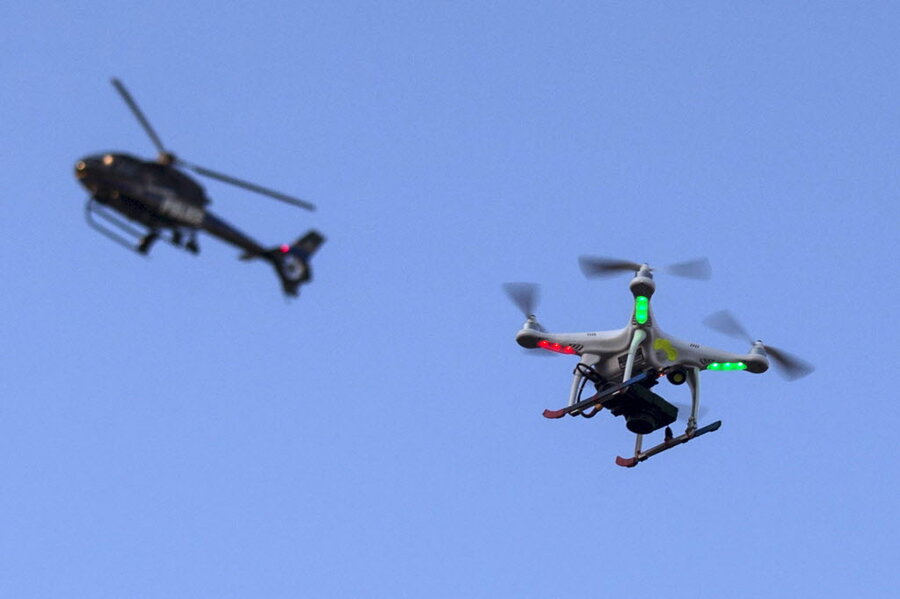Man shoots down neighbor's drone: Where's the privacy line?
Loading...
William Merideth of Hillview, Ky., is getting his 15 minutes of fame – or infamy, depending on your opinion of personal drones. Mr. Merideth was arrested on August 26 after shooting down a hobby drone that he alleges was flying over his yard and sun-bathing daughters.
“You know, when you’re in your own property, within a six-foot privacy fence, you have the expectation of privacy," he told Fox affiliate WDRB on Tuesday. "We don't know if he was looking at the girls. We don’t know if he was looking for something to steal. To me, it was the same as trespassing.”
As the news broke, Twitter lit up. Many tweets criticized Merideth for destroying someone else’s property, but others celebrated him for defending his home and privacy.
Opinions aside, what are the actual laws governing this situation? Where is the line between innocent drone piloting and invasions of privacy? Right now, it’s hard to tell.
Though the rules for the commercial use of drones are still in development, the Federal Aviation Administration (FAA) has fairly simple rules for amateur drone pilots:
- Don’t fly higher than 400 feet off the ground.
- Never lose line of sight with the vehicle.
- Make sure the drone weighs less than 55 pounds (about the heft of two cinder blocks).
- Stay away from airports and other manned vehicles, such as helicopters.
- And do not try to make money off of your new toy. Flying a drone for profit is illegal without an FAA waiver.
The pilot in Kentucky seems to have obeyed each of these rules.
A homeowner in California lost a recent legal battle over a similar situation, perhaps setting precedent in favor of pilots. A small claims court fined Brett McBay of Medesto, Calif., $850 after he shot down a drone flying in a neighboring yard. That case revolved around the fact that Mr. McBay destroyed someone else’s property even though it never actually entered his yard. Other jurisdictions may rule differently.
That said, federal law states that, “Whoever willfully ... sets fire to, damages, destroys, disables, or wrecks any aircraft in the special aircraft jurisdiction of the United States or any civil aircraft used, operated, or employed in interstate, overseas, or foreign air commerce … shall be fined under this title or imprisoned not more than twenty years or both.”
Even the United States Supreme Court ruled in 1989 that property could be surveilled at altitudes above or below 500 feet (the FAA lower limit for flight by fixed-winged vehicles). The case, Florida v. Riley, centered around surveillance that authorities had done on a greenhouse using a helicopter. The officers had not obtained a warrant, and the Supreme Court was to decide if this kind of surveillance was legal. In the end, they ruled that warrant-less surveillance was legal from a helicopter flying below the FAA limit as long as that surveillance was done with the “naked eye.” At the time, no one had invented tiny digital cameras, like the ones attached to modern drones, so it’s unclear how new technology will affect this legal precedent.
This debate is too new to be over. Florida v. Riley is several decades old at this point and was not specifically about hobby or commercial drone operation. There is much more to be considered and discussed.
Even the FAA’s opening statement on its website concerning unmanned flying machines admits this is not a closed issue. “Unmanned aircraft systems (UAS) are inherently different from manned aircraft,” it says. “Introducing UAS into the nation's airspace is challenging for both the FAA and aviation community, because the U.S. has the busiest, most complex airspace in the world. The FAA is taking an incremental approach to safe UAS integration.”







